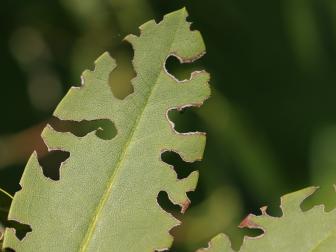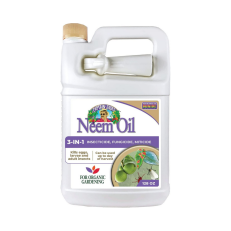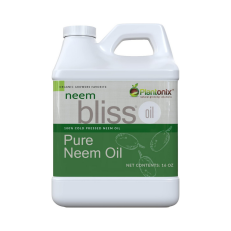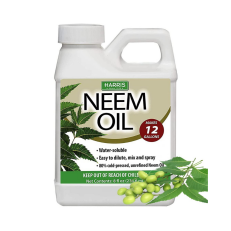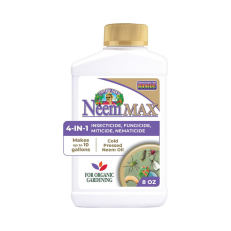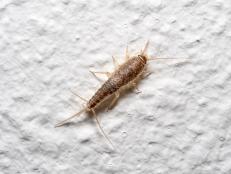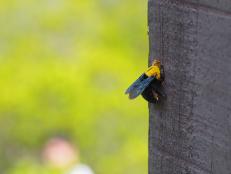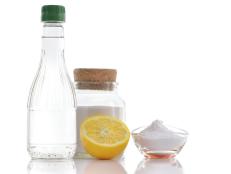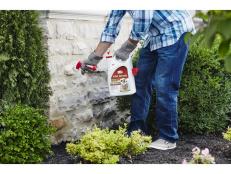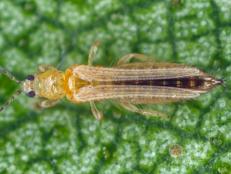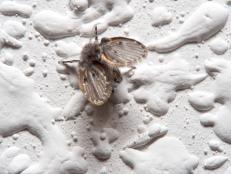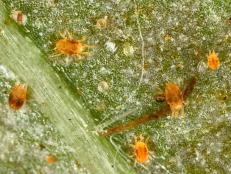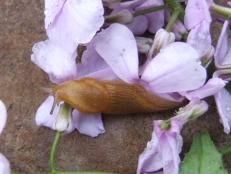How to Use Neem Oil on Plants
Neem oil helps control pests on garden and indoor plants. Learn tips for using this effective organic product and shop our product recommendations.

Shain Rievley
Neem oil can help when you have a squash bug infestation.
Make this the growing season that you tackle pest problems in your landscape and houseplants by learning how to use neem oil. This botanical pesticide — a pesticide derived from plants — works as an insecticide that kills roughly 200 different insects. It also has an impact on some plant diseases.
Neem oil comes in a variety of forms labeled as "safe for organic gardening." It may sound too good to be true, but it's not. Learn how to apply neem oil to deal with plant pests safely and effectively.
What is Neem Oil?
Neem oil is extracted from seeds of the neem tree (Azadirachta indica), native to India. Pure or cold-pressed neem oil contains a series of compounds known together as azadirachtin, which helps control insects and some plant diseases.
Neem oil that's processed is known as clarified hydrophobic extract of neem oil. This is also commonly referred to as neem oil. It acts as an insecticide that controls common garden pests.
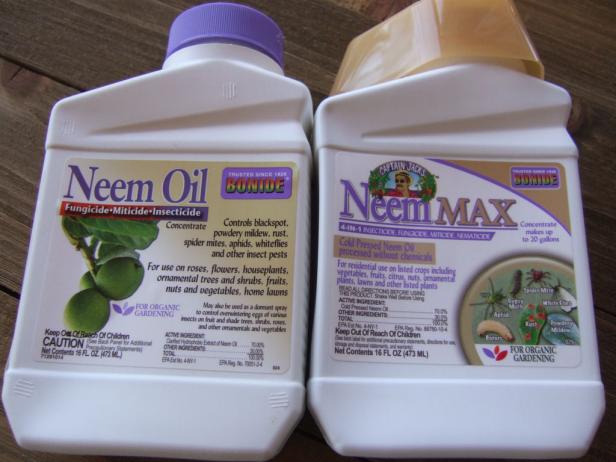
Julie Martens Forney
Neem oil comes in several forms, including clarified hydrophobic extract of neem oil (left) and cold-pressed neem oil (right). Each is effective against pests in different ways.
When you're choosing a neem oil product, read the product label to learn exactly what pests or diseases the product controls. Look under the "Active Ingredient" section of the label to learn which type of neem the product contains. Don't be distracted by marketing hype on product labels: Just read the active ingredients to know what you're getting.
How Does Neem Oil Work?
The different types of neem oil work in different ways.
Azadirachtin (cold-pressed neem oil) affects insects in several ways. It acts as an insect growth regulator that keeps insects from transitioning to the next life stage — basically disrupting an insect's life cycle. Because it affects insects this way, azadirachtin is more effective on immature or young life stages of an insect — and not the eggs or adults, which are mature and done changing life stages.
For azadirachtin to affect an insect's life cycle, it has to be ingested. The insect has to eat the plant it's sprayed on. It makes sense, then, that azadirachtin seems to work more effectively on chewing insects, such as cabbage loopers, cabbage worms, flea beetles, tomato hornworms or Colorado potato beetles, rather than sucking insects, such as aphids, whiteflies, leafhoppers, spider mites, squash bugs or thrips.
But at the same time, plant leaves sprayed with azadirachtin seem to be more distasteful to insects, so that can affect the level of control you achieve with chewing pests. Also, because of this repellent effect, spraying plants with this neem product may result in less plant damage overall, but it probably won't eliminate the pest problem completely.
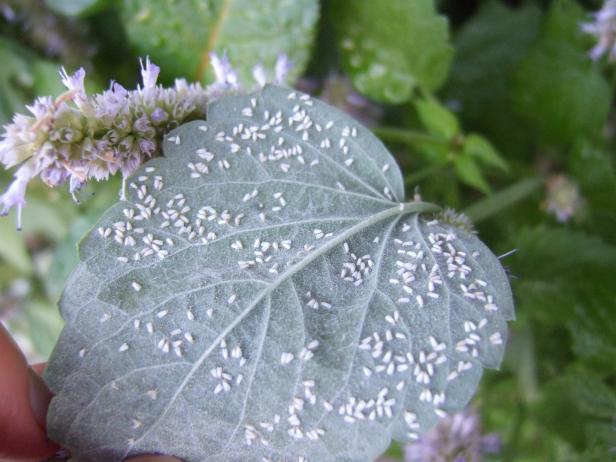
Julie Martens Forney
Whiteflies cluster underneath leaves usually starting in mid- to late summer. Neem oil can help control this pest.
Clarified hydrophobic extract of neem oil works like any horticultural oil: smothering or suffocating insects by blocking their breathing pores. It doesn't contain azadirachtin, so it doesn't make leaves distasteful to insects. Because it's an oil, that makes it highly effective against pests with soft bodies, including whiteflies, aphids, mealybugs, spider mites and scales. It can kill eggs, immature life stages (referred to as nymphs or larvae) and adult pests.
But clarified hydrophobic extract of neem oil kills only by contact with the pest, so you have to make sure the spray coats the target pest. In other words, you have to spray the plant really well, covering top and bottom of leaf surfaces.
With both of these neem products, the impact on pest populations isn't instant. Instead, it takes some time. Check plants three to four days after spraying, and re-treat as needed, according to the label instructions.
Which Type of Neem Oil Should You Use?
You'll readily find both types of neem oil — cold-pressed and clarified hydrophobic extract— for sale at garden centers and online. If you shop in places where they only carry organic treatments, you'll more likely find cold-pressed neem oil (although the other may be sold, too). Both are referred to as neem oil, so it's important to look at the active ingredient in the product.
It might seem confusing, but the secret to success lies in one thing: the product label. You might not know it, but when it comes to pesticides, product labels are the law. They're legally binding. Every piece of information you need to use the product successfully should be on that label.
To decide which type of neem oil to use, start with the product label. See what pests the product is effective against. This means you'll first need to identify the pest problem you have, so brush up your bug ID skills.
44 Common Garden Pests 45 Photos
You can identify pest damage in one of two ways: You see the insect or the damage it causes.
Once you know what pests you're targeting, you can choose which type of neem oil to use. In general, if you're dealing with an outbreak that has young insects but no eggs, go for the cold-pressed neem oil. It will interfere with the insects' transition to the next life stages.
If you have adult insects present and you also see eggs, use the clarified hydrophobic extract of neem oil to smother all the bad bugs — and their eggs.
The way to succeed with either of these neem oil products is to follow label directions in terms of how often to use. You might need to reapply every seven days for three weeks to make sure you get any eggs that might have hatched.
Shop Neem Oil Products
How Do You Use Neem Oil?
You'll find different forms of neem oil products, including liquid concentrate, wettable powder, ready-to-use sprays, granules and dust.
Many gardeners opt for the liquid concentrate, since it's usually the more inexpensive option. If you go this route, make sure you read the label carefully. It will likely require mixing the concentrate with water and soap. Do not use dish soap, which can harm plants, especially if it's a detergent that contains sodium hydroxide. Instead, you want a true soap, such as castile soap, which contains potassium hydroxide.

Shutterstock/Zhuravlev Andrey
When spraying neem oil on houseplants, move them to a sink, bathtub or tote container so that the oily overspray doesn’t land on important surfaces. Neem oil usually takes about 45 minutes to dry.
There are three main ways to use neem oil on plants:
- Foliar spray: Spray neem directly on plant leaves. This method can be used anytime during the planting season, but check the label for cautions related to spraying during high or low temperatures. Product used: Cold-pressed neem oil or clarified hydrophobic extract of neem oil.
- Dormant spray: Use this spray during late winter when plants are dormant and temperatures are above 40 degrees (or whatever temperature the label specifies). This spray kills eggs and garden pests that are hunkered down for winter. Product used: Clarified hydrophobic extract of neem oil.
- Soil drench: For this treatment, neem oil is mixed with water according to label directions and poured onto soil. Plant roots absorb the mixture and send it throughout the entire plant. This method is effective against sucking pests, as well as pests, eggs or larvae that hide in soil. Product used: Cold-pressed neem oil.
With each method, follow label instructions exactly with regard to reapplication.
Does Neem Oil Harm Dogs or Cats?
One of neem oil's greatest assets is that it's basically harmless to people and pets. In some countries, it's used as a flea treatment on animals. Sunlight breaks down neem oil on plants, and it has a very limited residual effect (hours, not days). In soil, it might last up to three weeks, but it doesn't affect earthworms or soil microbes adversely.
It's important to note, though, that neem oil doesn't discriminate between beneficial insects and problem pests, so that's something to consider when spraying. It also has an impact on amphibians and fish. All of this information is on the label.
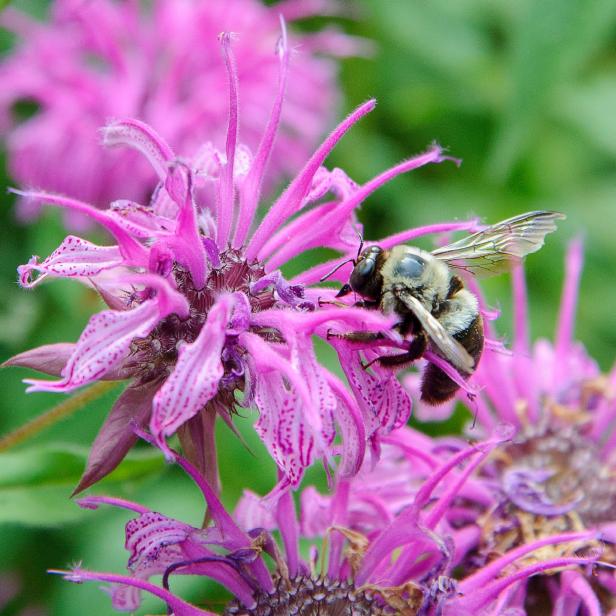
Chicago Botanic Garden at ChicagoBotanic.org
Neem oil can harm beneficial insects like bumble bees if not used correctly.
Steps for Using Neem Oil on Plants
These steps apply whether you're using cold-pressed neem oil or clarified hydrophobic extract of neem oil.
- Read the entire label of the neem oil product you're using. Make sure you understand what the product works against and how you're supposed to mix and/or apply it.
- Spray when beneficial insects and pollinators aren't active. Neem oil affects all insects — not just the problem ones. It can disrupt a honey or bumble bee's life cycle the same as a whitefly's. The best time to spray is dusk to late evening. Avoid spraying directly into open blossoms, where bees might be bedded down for the night.
- Spray from the top of the plant down, making sure to spray both top and bottom of leaves. Make sure spray contacts the area where leaves attach to stems.
- Check for pests in a few days. Reapply neem oil as needed, following label instructions.
Tips for Using Neem Oil
Neem oil can damage some plants, especially new transplants, plants with blue-toned leaves (such as hosta, eucalyptus) and some houseplants. Test the spray first on a small area. Wait 24 to 48 hours, then check for damage before spraying an entire plant.
There are plants not to use neem on:
- seedlings or transplants
- newly planted plants that might be experiencing transplant shock
- drought-stressed plants.
Skip spraying when temperatures are 85 degrees to 90 degrees or below 50 degrees with nightly lows above freezing. In either of these conditions, neem oil can damage plants.
Experts suggests choosing a pre-mixed neem product over a concentrate because it's mixed in the right proportions and safer for plants. Ready-to-use products also ensure you're using the minimum amount of neem oil necessary for controlling pests.







